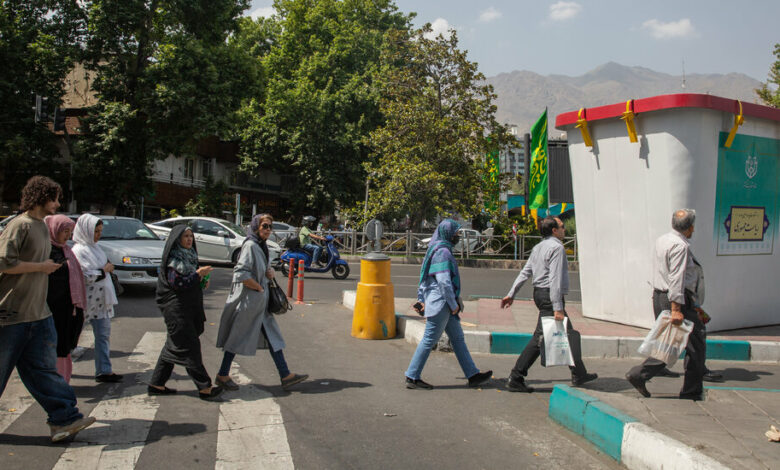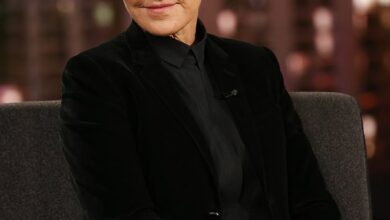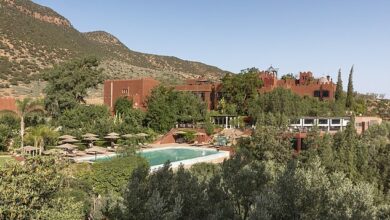Iranians say elections bring little change, so why vote?

Apart from the tattered posters of Iranian presidential candidates on highway overpasses, there were few signs this weekend that the country was holding presidential elections on Friday and that a runoff would follow.
There were few gatherings to applaud the two candidates who received the most votes, who are at opposite ends of the political spectrum and between whom Iranians will choose on July 5.
Even the official government figures showed that the real winner of Friday’s election was Iran’s silent majority, who left their ballots blank or did not vote at all. About 60 percent of eligible voters either did not cast a ballot or chose to vote blank.
That was because there was no point in voting, said Bita Irani, 40, a housewife in Tehran, Iran’s capital: “We had a choice between bad and worse,” she said. “There is no difference between one candidate and another.”
Many Iranians now see no reason to get involved, she said. “We are spectators, not participants,” she said. “We watch the elections, and if there are riots, we watch them, but we will not vote.”
I heard her assessment again and again when I spoke to people from different backgrounds in Tehran, even those who had voted but seemed to be preparing for disappointment.
Many people were saddened by their previous election experiences and dissatisfied with their leaders’ inability to address Iran’s most pressing issues, especially its ailing economy.
Still, despite Iran’s limited tolerance for dissent, people spoke somewhat freely, offering a glimpse of the skeptical sentiment in the capital.
Lurking in the wake was the frustrated history of Iran’s reform movement, which sought to smoothen both the Islamic Republic’s domestic and foreign policies, from loosening social freedoms to improving relations with the West. Several prominent Iranians, including two presidents, had embraced reformist platforms, but their efforts were consistently blocked by the country’s religious leaders, leading to waves of protests that ended in a crackdown and violence.
The most recent of those efforts took the form of a nationwide uprising in 2022 that was led by women. It began as a protest against Iran’s mandatory hijab law but quickly expanded to calls for an end to clerical rule. By the time the demonstrations were crushed, more than 500 people had been killed and more than 22,000 had been detained, according to a United Nations fact-checking mission.
Those defeats in the recent past have led even those who voted for the only reform candidate in these elections to temper their expectations.
Farzad Jafari, 36, who runs an agricultural export company, sat with four friends at a neighborhood cafe in a leafy square in posh north Tehran on Saturday, a day after the vote. He said he almost didn’t vote.
Most of the people he knew were not in this round of the presidential election, he said, and of the four people who had coffee with him, only Mr. Jafari and one of his friends had voted.
“I didn’t want to vote at all because they excluded those who should have been in the race,” Mr Jafari said, referring to Iran’s system in which a council of Muslim clerics known as the Guardian Council vets potential candidates.
He realized, he said, that it was unlikely that anyone could bring about change because ultimately all decisions are made by Ayatollah Ali Khamenei, Iran’s supreme leader.
After the first round voting, only two candidates remained: Masoud Pezeshkian, a reformer whom Mr Jafari had voted for, and Saeed Jalili, an ultra-conservative former nuclear negotiator.
That a reform candidate had made it to the second round seemed to energize Mr. Jafari and another man at the table, and soon they were plotting their next moves. They talked about which candidate would win the votes of those no longer in the race, and how many Iranians who boycotted the first round would be able to vote in the second round.
The main question, however, was whether a possible split between a hardline conservative and a reformist will motivate reform-minded voters to cast their votes on July 5, including those who boycotted the first round. If so, it could be seen as a victory for the government, which sees participation in elections as a measure of the regime’s legitimacy.
When the conversation turned to Friday’s second round, and I asked if those who hadn’t voted in the first round would vote in the second round, three of them shook their heads no. Mr. Jafari looked contrite.
“People have no hope,” he said, but then added: “But the point is, the only thing we can do is hope.”
Similar sentiments prevailed in the square among four women gathered before going shopping in the crowded Tajrish bazaar – where saffron and cardamom are sold, as well as curtain fabric, fine cotton scarves and fake designer bags, alongside cooking pots and vats of homemade yoghurt.
The politics, dress and tone of the women couldn’t be more different. Fatima, 40, mother of three, wore a black chador. Sherveen, 52, a civil engineer, wore a fashionably cut mustard-colored blouse and rust-brown trousers. Her headscarf barely covered her head. A third woman wore stylish loose linen pants and her thin white hijab hung around her shoulders.
Of the four women, two voted and two did not. All four asked to be identified only by their first names, fearing reprisals at their workplace or by family members.
Even Fatima, who voted for the most conservative candidate and seemed most involved in the elections, did not sound very enthusiastic. For her, voting was a religious obligation.
But, she added, if the reform candidate wins, “I will support him.”
Fatima found reassurance and stability in all the candidates being approved by Iran’s religious leaders, unlike many Iranians, who saw such a purge as a way to halt efforts to change Iran’s clerical-dominated system.
Sherveen, on the other hand, said she had lost all confidence in the government and, like a number of educated and skilled Iranians, was considering leaving Iran. She’s thinking about going to Canada, but not quite yet — her son was in his senior year of high school. Her daughter is already in Toronto, as are several of her siblings.
“Unfortunately, we don’t trust anyone who the government allows to flee,” she said. “It’s all getting worse. It used to be better five or 10 years ago, but now we have less money and less freedoms. Economy and freedom, those are the key words.”




